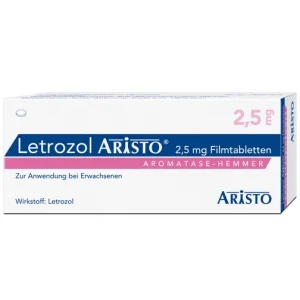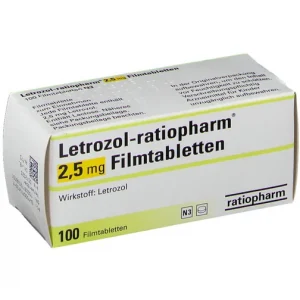Description
Pharmacokinetics is non-linear
- Distribution
The binding of letrozole to plasma proteins is approximately 60% (mainly albumin – 55%). The concentration of letrozole in erythrocytes is approximately 80% of the plasma concentration. The apparent Vd at equilibrium is approximately 1.87±0.47 l/kg. Css is achieved within 2-6 weeks of daily administration of the drug at a daily dose of 2.5 mg. No accumulation has been reported with long-term use.
- Metabolism
Letrozole is extensively metabolised by the isoenzymes CYP3A4 and CYP2A6 with the formation of the pharmacologically inactive compound carbinol.
- Excretion
Excreted mainly via the kidneys as metabolites, to a lesser extent via the intestines. The final T1/2 is 48 h.
Pharmacokinetics in specific clinical situations
The pharmacokinetic parameters of letrozole do not depend on the age of the patient.
In renal failure, pharmacokinetic parameters do not change.
In moderately severe hepatic impairment (Child-Pugh class B), mean AUC values, although 37% higher, remain within the range of values observed in subjects without hepatic impairment. In patients with cirrhosis and severe hepatic impairment (Child-Pugh class C), the AUC increases by 95% and the T1/2 increases by 187%. However, given the good tolerability of the drug at high doses (5-10 mg/day), there is no need to change the dose of letrozole in these cases.






Reviews
There are no reviews yet.